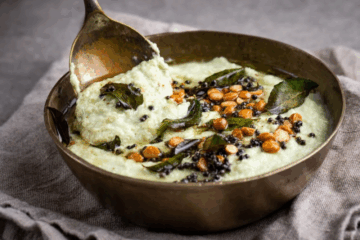Hing (asafoetida) is more than just a spice—it is a natural antioxidant powerhouse. Modern science and Ayurveda both highlight its ability to protect cells from free radical damage, helping in disease prevention, reducing inflammation, and promoting overall well-being. Let’s explore its antioxidant role in detail.
How does hing act as an antioxidant — what compounds in it help fight free radicals?
Short Answer: Hing contains bioactive compounds like ferulic acid, sulfur compounds, and volatile oils that neutralize free radicals, thereby protecting cells from oxidative stress.
Detailed Answer:
- Ferulic Acid: A natural phenolic compound in hing, ferulic acid scavenges harmful free radicals, reducing oxidative stress in the body.
- Sulfur-Containing Compounds: Hing is rich in sulfur derivatives that help detoxify cells and promote antioxidant defense mechanisms.
- Volatile Oils: These oils exhibit anti-inflammatory and antioxidant effects that enhance cellular protection.
- Polyphenols: Hing has polyphenolic compounds that strengthen the body’s immune system by fighting oxidative damage.
- Enzyme Activation: It promotes the activity of antioxidant enzymes like superoxide dismutase and catalase, helping in neutralizing free radicals.
Can consuming hing regularly help prevent lifestyle-related issues like inflammation or aging?
Short Answer: Yes, hing’s antioxidant properties help reduce inflammation, slow down signs of aging, and improve immunity when consumed regularly in moderate amounts.
Detailed Answer:
- Anti-Inflammatory Effect: Its sulfur-rich compounds reduce inflammation linked to arthritis, joint pain, and other lifestyle-related issues.
- Skin Health: Antioxidants protect skin cells from oxidative stress, slowing premature aging, fine lines, and wrinkles.
- Metabolic Support: Hing helps regulate glucose levels and improves digestion, indirectly preventing metabolic disorders.
- Immune Strength: Regular use boosts immunity by reducing oxidative load and protecting white blood cells.
- Cardiovascular Benefits: It supports healthy blood circulation and reduces oxidative stress linked to heart disease.
Is there any scientific research or Ayurvedic evidence that supports hing’s antioxidant properties?
Short Answer: Both modern research and Ayurveda validate hing’s antioxidant role, highlighting its power in detoxification and protection against oxidative damage.
Detailed Answer:
- Ayurvedic Evidence: Ancient Ayurvedic texts describe hing as “Hingu,” known for its ability to balance doshas, detoxify the body, and support digestion—all tied to antioxidant benefits.
- Scientific Studies: Research in Journal of Food Science and Phytotherapy Research shows hing extracts possess significant antioxidant activity due to ferulic acid and sulfur compounds.
- Anti-Aging Studies: Animal studies indicate hing reduces oxidative stress markers, suggesting potential in delaying age-related cell damage.
- Immunity Research: Hing has shown protective effects against oxidative stress in immune cells, enhancing resistance to infections.
- Synergistic Role: Studies support its use with other antioxidants for improved cellular defense.
What’s the best way to include hing in my diet to get antioxidant benefits — and how much is safe?
Short Answer: Add a pinch (200–500 mg per day) of hing in daily cooking, teas, or digestive blends. Overuse should be avoided to prevent stomach irritation.
Detailed Answer:
- Tadka (Tempering): Use a pinch in hot oil or ghee before adding to dals, curries, and vegetables.
- Herbal Tea: Mix hing with ginger and turmeric tea for digestive and antioxidant benefits.
- Digestive Blend: Combine hing with cumin and ajwain powder for bloating relief and cellular protection.
- Dosage: 200–500 mg daily is safe; higher amounts may cause irritation.
- Avoid Excess: Pregnant women and individuals with sensitive stomachs should consult a doctor before regular use.
| Form of Hing | How to Use | Safe Daily Dosage |
|---|---|---|
| Powder | Add in curries, dals, and soups | 200–500 mg |
| Resin | Dissolve in warm water or oil before use | 200 mg |
| Digestive Mix | Blend with cumin, ajwain, or ginger | 300 mg |
Can hing be combined with other antioxidant-rich foods or spices for better results?
Short Answer: Yes, hing works well with turmeric, cumin, amla, and ginger, enhancing antioxidant protection and overall health benefits.
Detailed Answer:
- Hing + Turmeric: Curcumin and ferulic acid together provide powerful anti-inflammatory and antioxidant synergy.
- Hing + Cumin: Improves digestion and enhances antioxidant enzyme activity.
- Hing + Amla: Boosts vitamin C intake, strengthening immunity and reducing oxidative stress.
- Hing + Ginger: Adds anti-inflammatory and antioxidant benefits for better metabolism.
- Hing + Black Pepper: Piperine increases bioavailability of antioxidants, making hing more effective.
| Combination | Key Benefit | Best Way to Consume |
|---|---|---|
| Hing + Turmeric | Reduces inflammation, enhances antioxidant protection | Add in curries, herbal teas |
| Hing + Cumin | Supports digestion and cellular detox | Use in tempering and spice blends |
| Hing + Amla | Boosts immunity and vitamin C absorption | Mix in herbal blends or chutneys |
| Hing + Ginger | Improves metabolism and reduces oxidative stress | Add to soups and teas |
| Hing + Black Pepper | Increases absorption of antioxidants | Include in spice mixes or gravies |
Conclusion
Hing as a natural antioxidant is more than a traditional spice—it’s a shield against free radical damage. From bioactive compounds like ferulic acid and sulfur to its synergy with turmeric, amla, and cumin, hing protects cells, supports immunity, and promotes longevity. Adding a pinch daily is an easy way to boost overall wellness naturally.





